Trat, located on the southeastern coast of Thailand, is a unique destination waiting to be discovered with its natural beauty found both on the mainland and in the surrounding archipelago. With its long and untouched beaches, rich tropical forests, and deep blue sea, it is an ideal retreat especially for sea and nature lovers. Famous islands such as Koh Chang, Koh Kood, and Koh Mak each have a different atmosphere and offer numerous activities such as snorkeling tours, day boat trips, and coastal cycling routes. In addition, the region’s swampy mangrove forests and volcanic rocky areas promise an unforgettable experience for ecotourism enthusiasts.
On the mainland, Trat city center stands out as a small yet lively port town for those who want to closely experience traditional Thai culture. The temples, museums, and colorful markets in the city reflect the historical and cultural texture of the region to visitors. In addition, panoramic viewpoints at remote points like Laem Ngop and monuments marking the narrowest land part of Thailand are must-see stops for travelers looking for unique photo opportunities. This rich diversity makes Trat an attractive destination both as a relaxing island getaway and a cultural discovery route.
1. Koh Chang
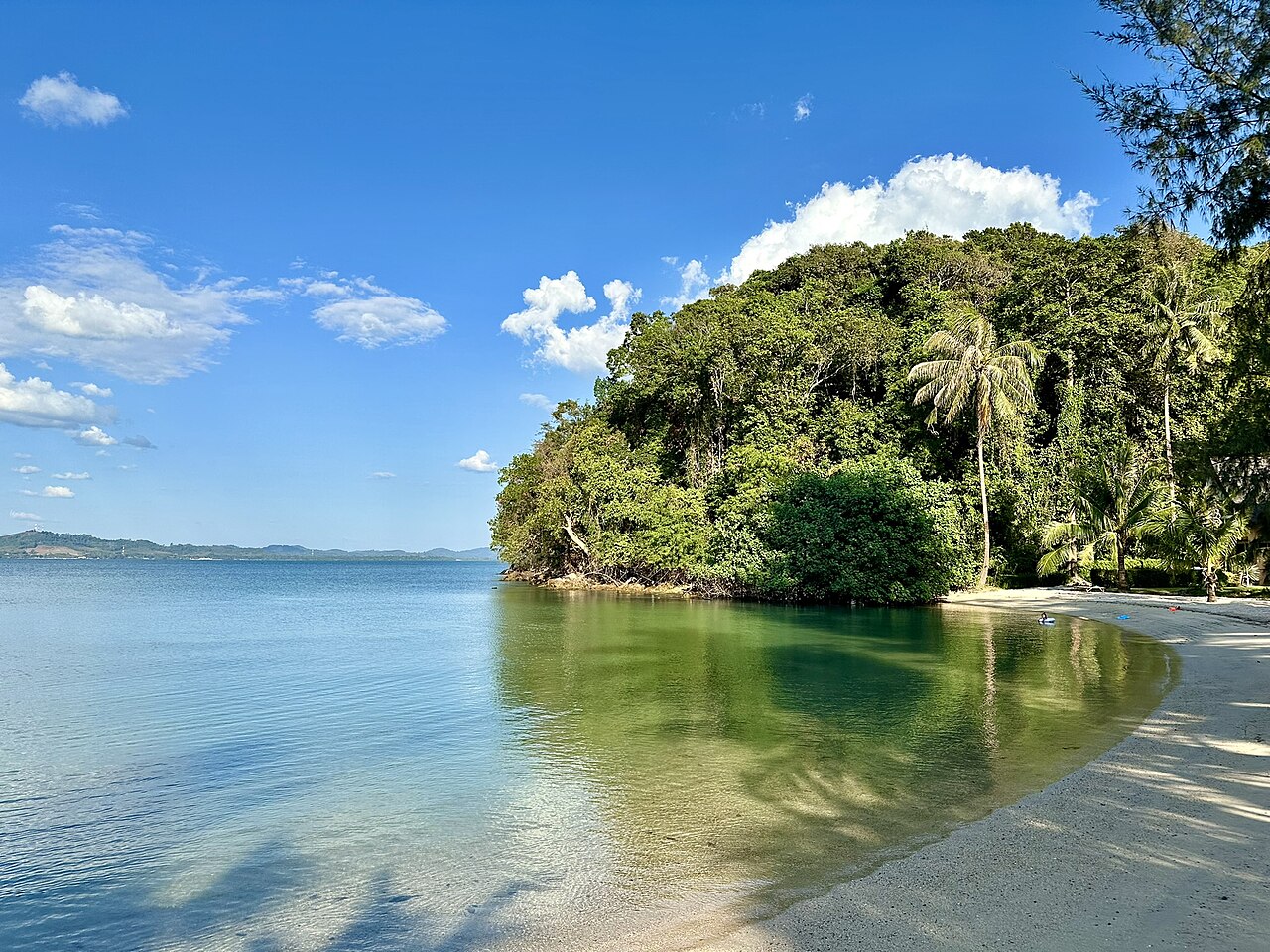
Koh Chang, also known as the “Elephant Island,” is Thailand’s second-largest island. Located in the Gulf of Eastern Thailand, approximately 300 km east of Bangkok and near the Cambodian border, the island spans 213 km² and forms the most significant part of the Mu Ko Chang Marine National Park. Established in 1982, this national park covers an area of 406,250 rai (≈650 km²) and protects 52 islands; about 70% of Koh Chang is covered with untouched rainforests. Thanks to ongoing responsible tourism development, the island offers a blend of wildlife and local village life, providing visitors with both a natural and cultural experience.
The fine sandy beaches stretching along both coasts of the island, crystal-clear waters, and colorful coral reefs create ideal conditions for snorkeling and diving enthusiasts. Inland, the Klong Plu and Than Mayom waterfalls offer refreshing breaks during tropical forest hikes, while popular beaches such as White Sand Beach, Lonely Beach, and Klong Prao feature both lively and quiet spots. Additionally, activities such as kayaking, canoeing, and long-tail boat tours make discovering Koh Chang’s natural diversity even more enjoyable.
2. Koh Kood (Ko Kut)
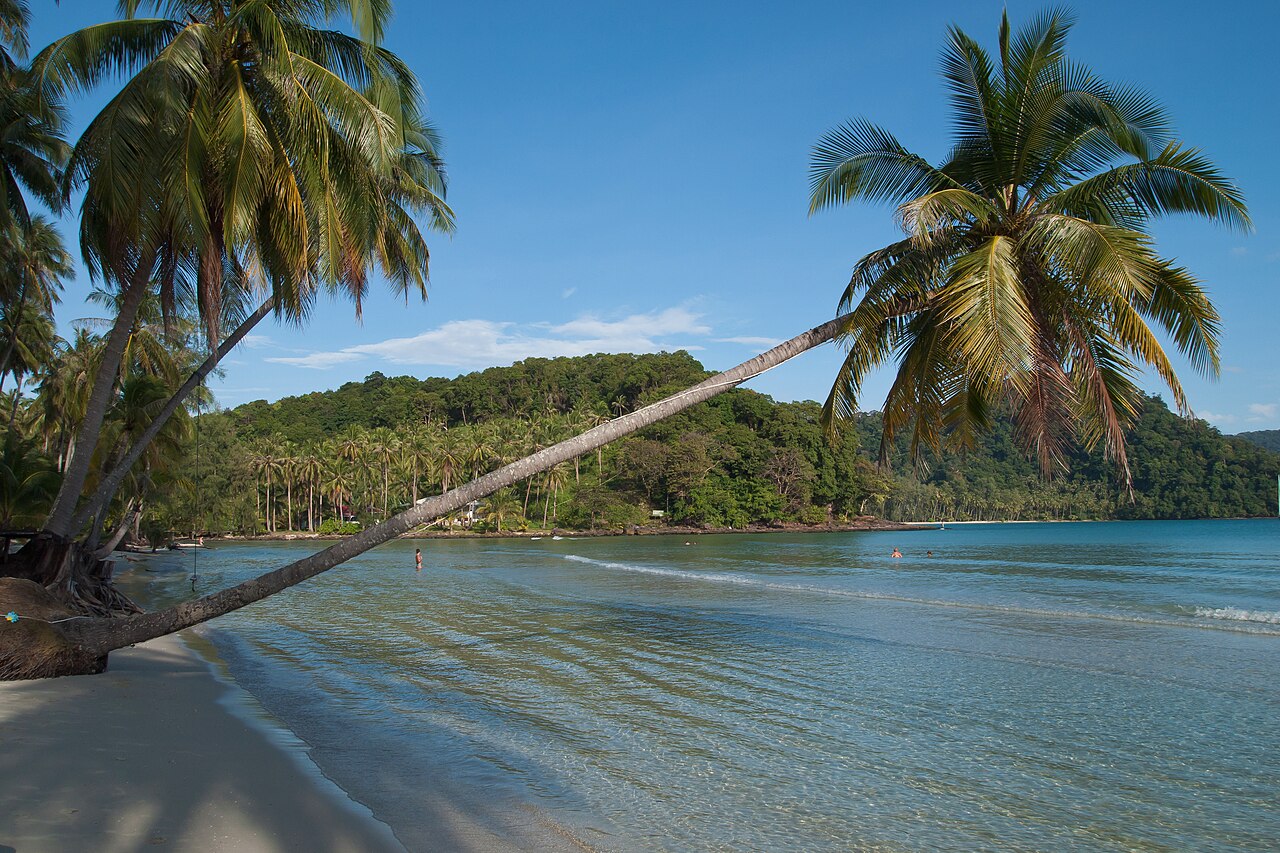
Koh Kood (Ko Kut) is the largest island in Trat province, located in the Gulf of Thailand. Measuring approximately 25 km in length and 12 km in width, the island remains relatively undeveloped and pristine in terms of both area and vegetation, making it an ideal destination for ecotourism. In addition to its fishing and agriculture-based economy, rapidly developing tourism in recent years has brought Koh Kood into the spotlight, especially for its peaceful beaches and untouched forests. The white sandy shores stretching from Bang Bao and Ao Phrao in the north to Ao Tapao in the south, along with crystal-clear waters and colorful coral reefs, offer unforgettable snorkeling and swimming experiences.
Although there are no direct flights to Koh Kood, the approximately 330 km journey from Bangkok to Trat can be completed by bus, minivan, or plane, followed by a speedboat transfer from Laem Sok or Ao Thammachat to the island. The Boonsiri catamaran stands out as the most comfortable and fastest option for the return trip (about a 1-hour voyage). The best weather conditions are typically from November to February, making this the most optimal time for travel and accommodation, while the less-visited period from April to November sees limited boat services. It is also recommended to bring insect repellent for activities such as exploring mangrove areas and forest hiking trails.
3. Koh Mak
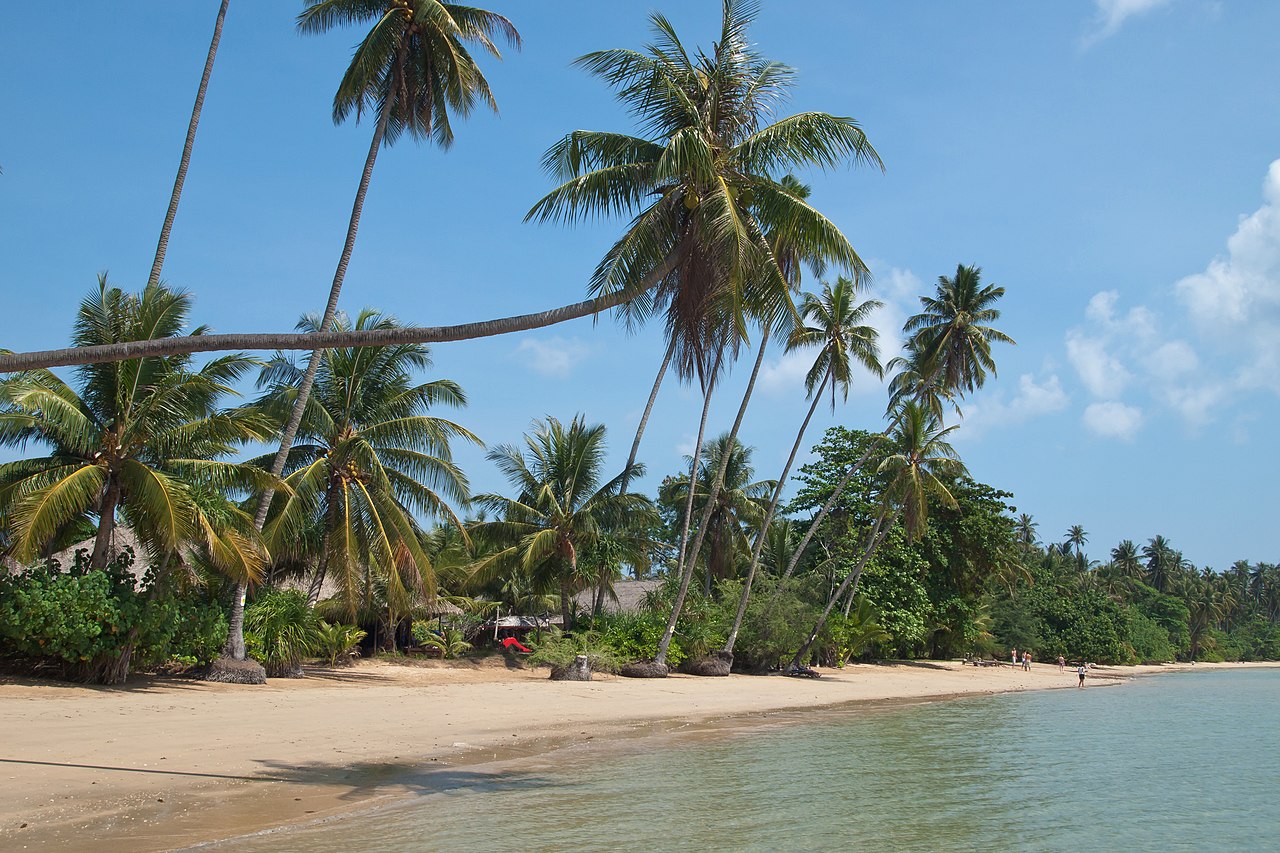
Koh Mak is the third-largest island of Trat, located in the Gulf of Eastern Thailand, approximately 35 km from the mainland. With an area of 16 km² and a coastline stretching over 27 km, it offers a peaceful atmosphere with long sandy beaches. Although there are a few hills on the island, it is generally flat; it is home to around 400 permanent residents, a temple, a primary school, three fishing villages, a small market, and a health center. During low tide, it is even possible to walk to the neighboring island of Ko Kham across a shallow passage.
In terms of tourism, Koh Mak is a small-scale island focused on ecotourism, closed to mass tourism. Around 15 boutique resorts lined along the coast offer opportunities to explore colorful coral reefs through snorkeling, diving, and sea kayaking. Other available activities include bicycle tours, Muay Thai classes, traditional Thai cooking workshops, and nature hikes. The island’s residents support environmental awareness by reducing plastic usage and organizing the “Trash Hero” beach cleanup campaign every Saturday.
4. Laem Ngop Easternmost Land
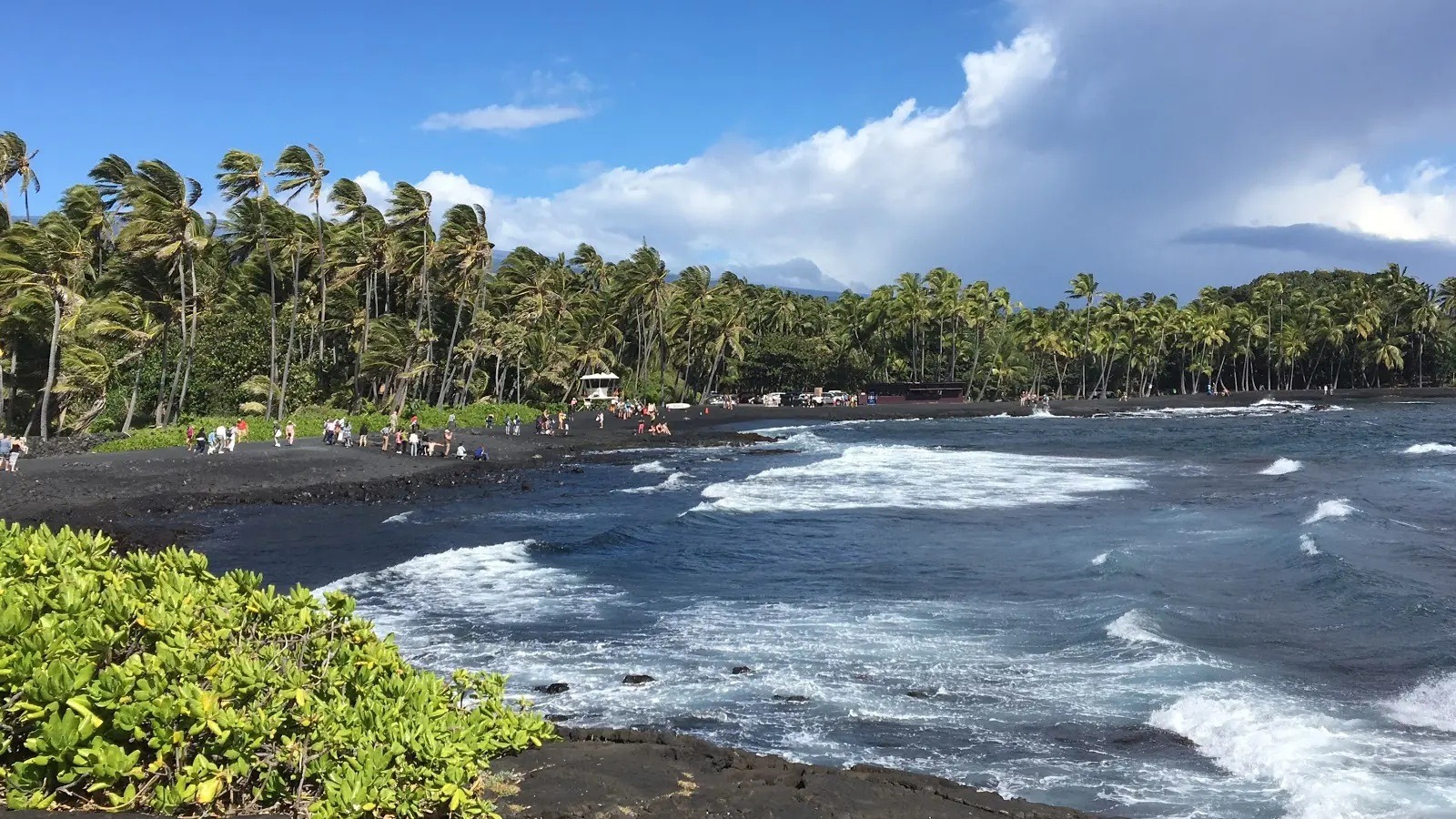
Laem Ngop Easternmost Point is a symbolic site located in Laem Ngop District of Trat Province, marking the easternmost point of mainland Thailand. Situated on an old pier, the scenic viewpoint features an iconic lighthouse and a directional sign reading “The Eastern Apex,” offering a perfect backdrop for sunrise and sunset photography. The deep blue waters of the Philippine Gulf and the distant silhouette of Koh Chang create a breathtaking panorama, especially on clear days.
The area is accessible by land via the Trat–Laem Ngop road, as well as by boat from Laem Sok or Ao Thammachat piers, which can take visitors directly to the point. Beyond its natural beauty, it also holds historical significance due to the Yuttanavi Monument, erected in memory of 36 Thai sailors who lost their lives in the 1941 Battle of Ko Chang. Special commemorative visits are held here annually during memorial ceremonies. With its quiet and peaceful atmosphere, Laem Ngop Easternmost Point offers a unique experience for both nature lovers and those interested in culture.
5. Black Sand Beach (Hat Sai Dam)
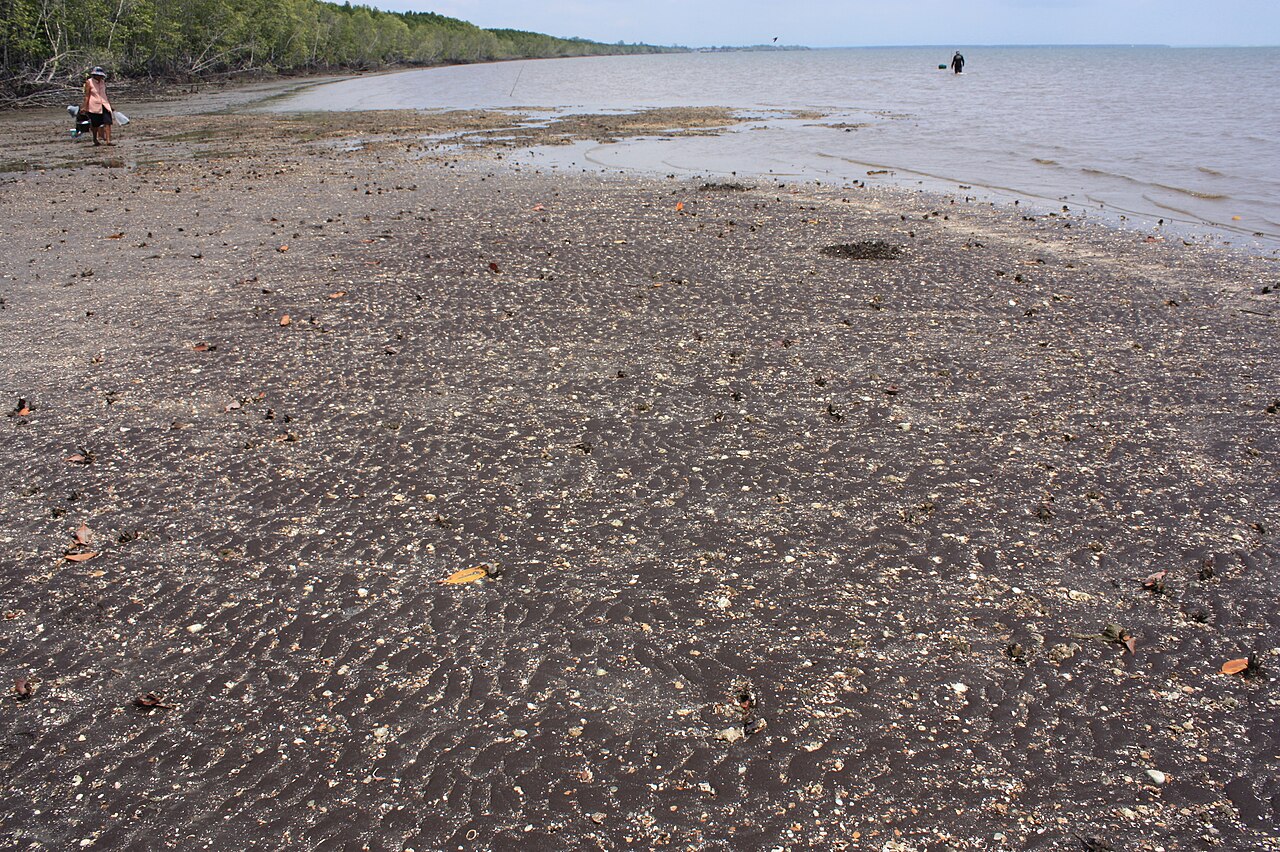
Hat Sai Dam (Black Sand Beach) is a rare natural phenomenon located in Ban Klang, Laem Ngop area, and is reached via an approximately 1 km-long mangrove forest walking trail. The beach itself is covered with fine, distinctive powder-like black sand, and this naturally formed bay is one of its kind in Thailand. Along the walking route, visitors observe flowing river branches and the diverse mangrove ecosystem, culminating in the striking view of the black sand strip at the end.
A small parking area and visitor center located along the concrete access road provide informational panels and rest spots for guests. Starting from the center, a wooden walkway meanders through the mangroves, leading to a seaside observation tower and a gazebo built over the water. From there, it is possible to enjoy views of the gulf, including the silhouette of Hedgehog Island (Koh Chang). Stairs descending to the shore offer direct access to the black sand patch; although the beach has a relatively small surface area, it provides a short yet striking trip for photographers and nature enthusiasts.
6. Emerald Sea in the Trat Archipelago
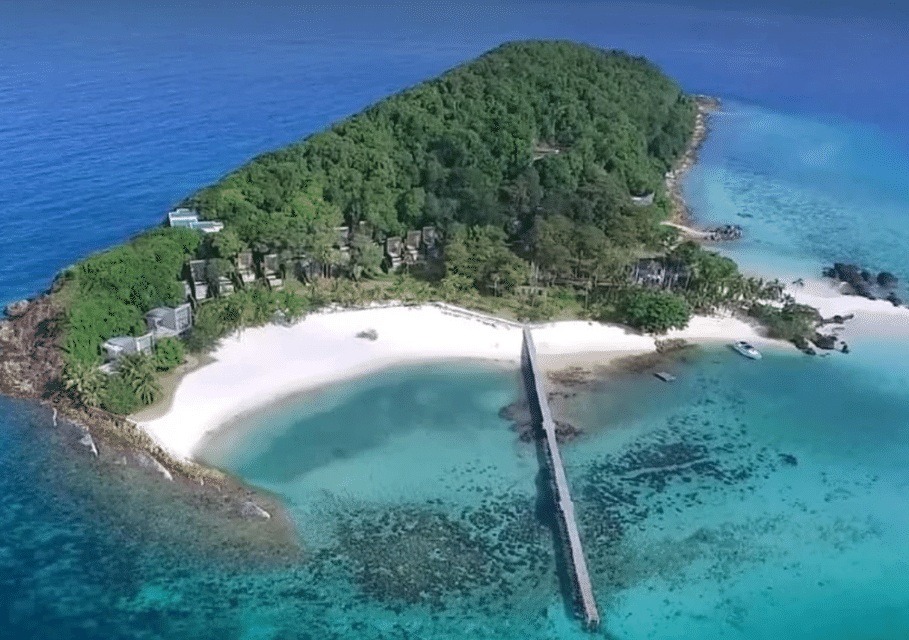
The Emerald Sea in the Trat archipelago is considered the most breathtaking beauty of Thailand’s eastern waters; its crystal-clear sea, creamy white beaches, and indigo blue sky are framed by islands such as Ko Chang, Ko Kut, Ko Mak, Ko Kham, Ko Rang, and Ko Kradat. This shimmering marine expanse spans the shallow channels between the islets, where the interaction of sunlight, tropical vegetation, and sea depth creates the characteristic emerald hue that gives it its name.
The ideal period to witness the Emerald Sea’s striking green tones is from late November to early March, when rainfall is minimal and sea conditions are calm, allowing for maximum underwater visibility while snorkeling and pleasant boat excursions. The city of Trat serves as the primary launching point for daily ferries and traditional long-tail boats, transporting visitors to these emerald-colored islands filled with pristine coral reefs, hidden coves, and mangrove channels.
7. Lan Tabun Mangrove Area in Tha Ranae
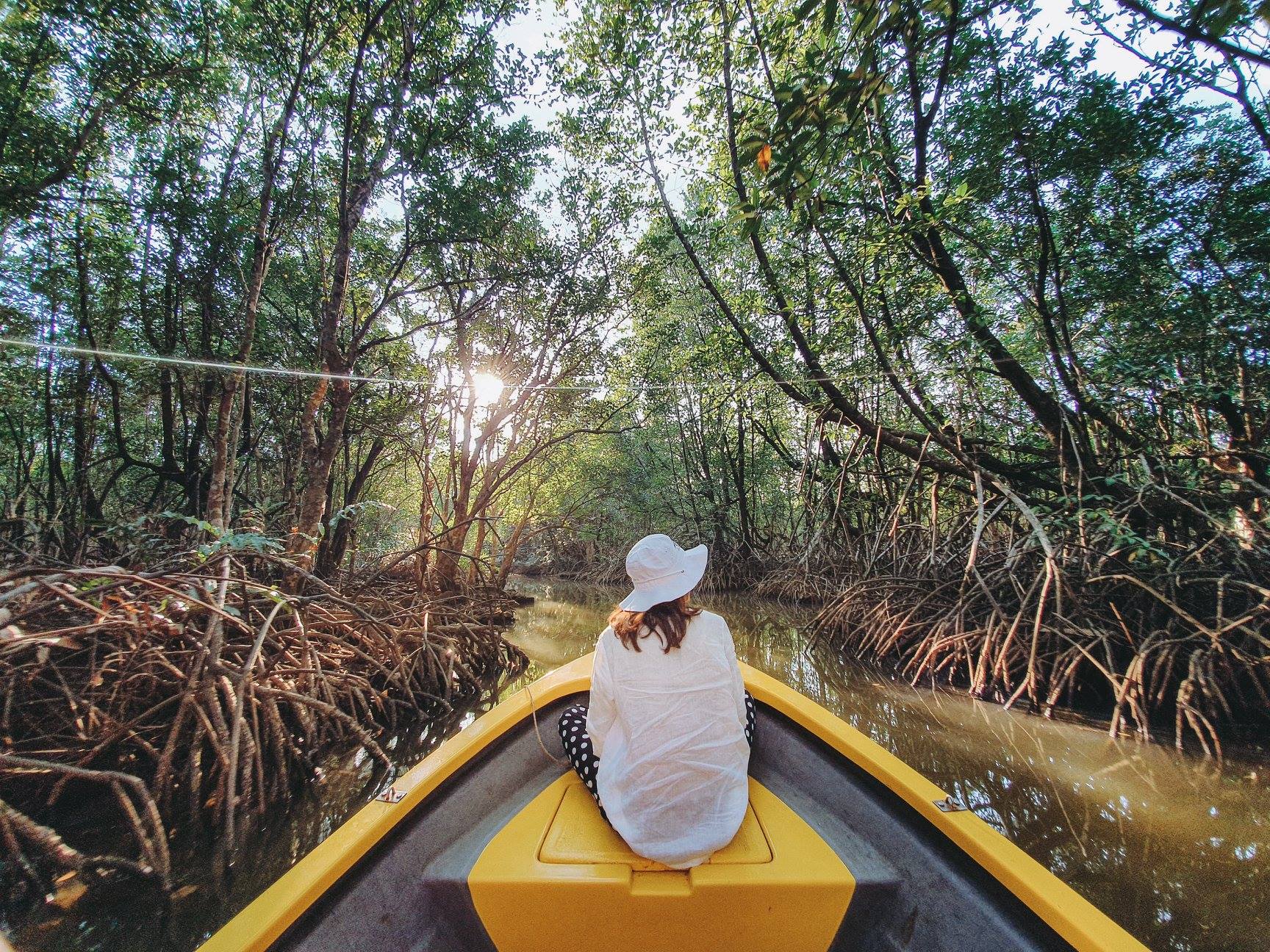
Lan Tabun is a mangrove forest located in Ban Tha Ranae village, within Mueang Trat District, covering an area of approximately 2,000 rai (≈3.2 km²). This ecosystem, with a history of over a hundred years, is home to four different mangrove species, mainly the Tabun (Xylocarpus) variety. The Tabun trees, with their wave-like aerial roots rising from clay soil, give the area a “fantastical forest” appearance, offering a unique natural phenomenon.
Visitors reach the area by small boats departing from Ban Tha Ranae pier; the journey passes through channels formed by red mangroves, Nipa palm fields, and the rare “bridge-rooted” mangroves. This location is ideal for taking photo breaks in the natural tunnels created by the mangroves, watching the gulf view from waterfront observation towers, and observing the rich biodiversity filled with spider crabs, shrimp, and fish.
8. Narrowest Part of Thailand Monument
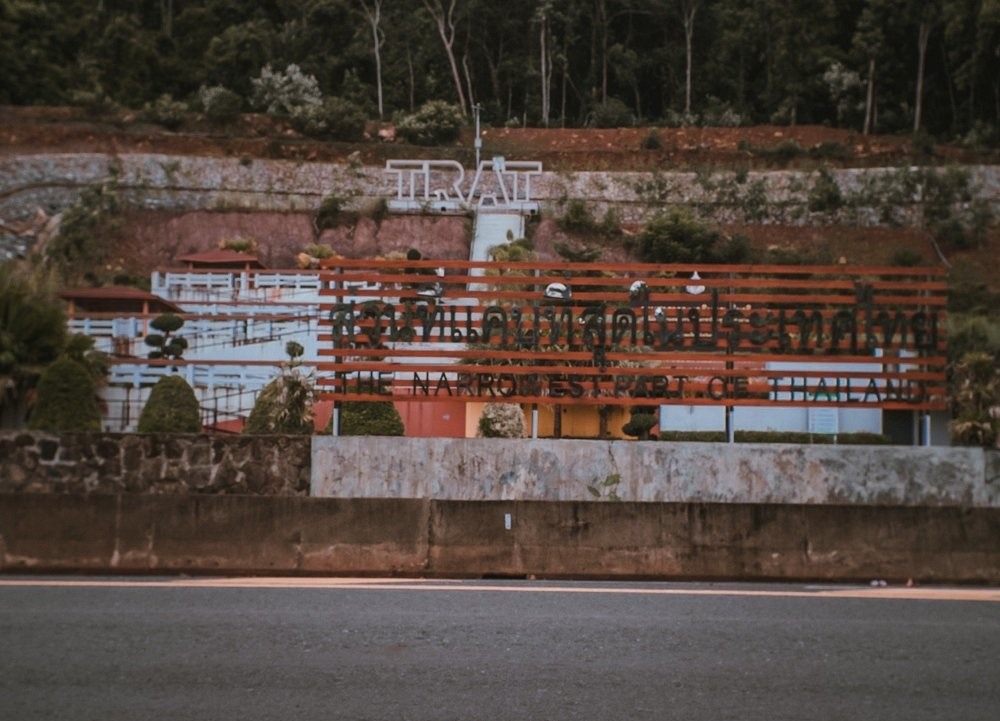
The Narrowest Part of Thailand Monument is located in the Hat Lek area of Khlong Yai District, Trat Province, between the 81–82 km markers along Sukhumvit Road. Here, the distance from the coastline to the Cambodian border is only about 450 meters, forming the geographical “panhandle” of the country. This narrow point is marked with a small platform and directional signs, offering visitors a chance to observe both the region’s unique geography and the remarkably close border view.
The monument can be reached by traveling approximately 60 km south from Trat city center along Sukhumvit Road (Route 3); local buses, minivans, or Grab taxis provide access to the area, and from Hat Lek, it’s only a 10–15 minute walk or bike ride to the monument. Visitors can access the platform between 07:00–18:00, climbing the sea-facing stairs to capture ideal angles for sunrise and sunset photos; from the steep stairs and viewing terrace, an impressive panoramic view can be seen, including the silhouette of Koh Chang.
9. Trat City Pillar Shrine
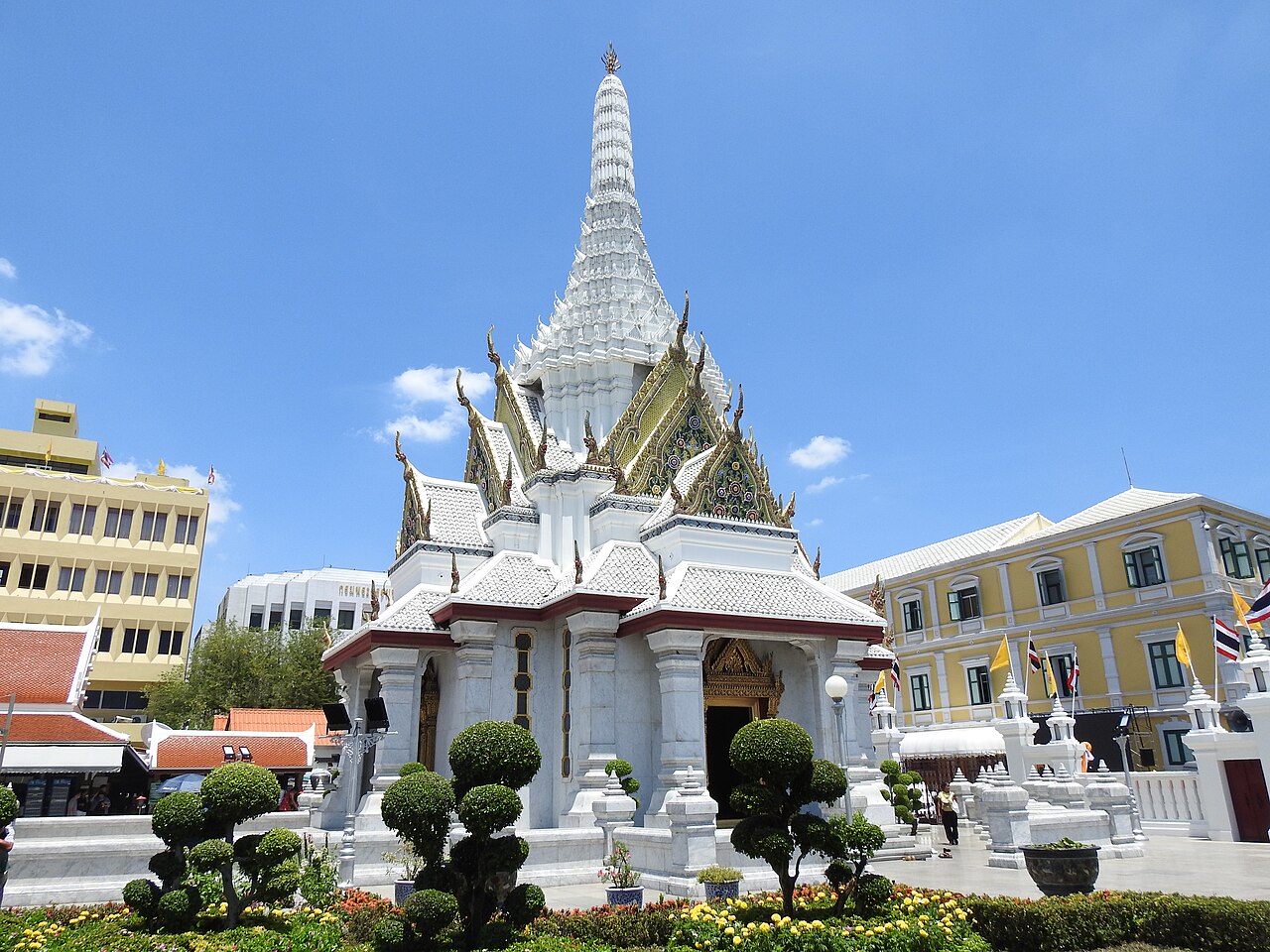
Trat City Pillar Shrine is one of the rare city pillar examples inspired by Chinese temple architecture. It was commissioned by King Taksin after the fall of Ayutthaya in the 18th century, during his campaign to reunify Siam, and was built to house the protective spirits of the region. With its colorful pillar carvings, dragon figures, and lotus motifs on the roof, the shrine combines both Thai and Chinese aesthetic elements; this architectural richness makes it one of Trat’s most striking landmarks.
Today, the shrine is open to visitors from 5:00 AM to 9:00 PM, with free entry. Locals come to pray for wishes related to work, health, and family well-being; during annual rituals, offerings of flowers and incense are made around the pillar. A small museum building in the courtyard provides additional cultural context through photographs and written materials about the city’s history.
10. Trat City Museum
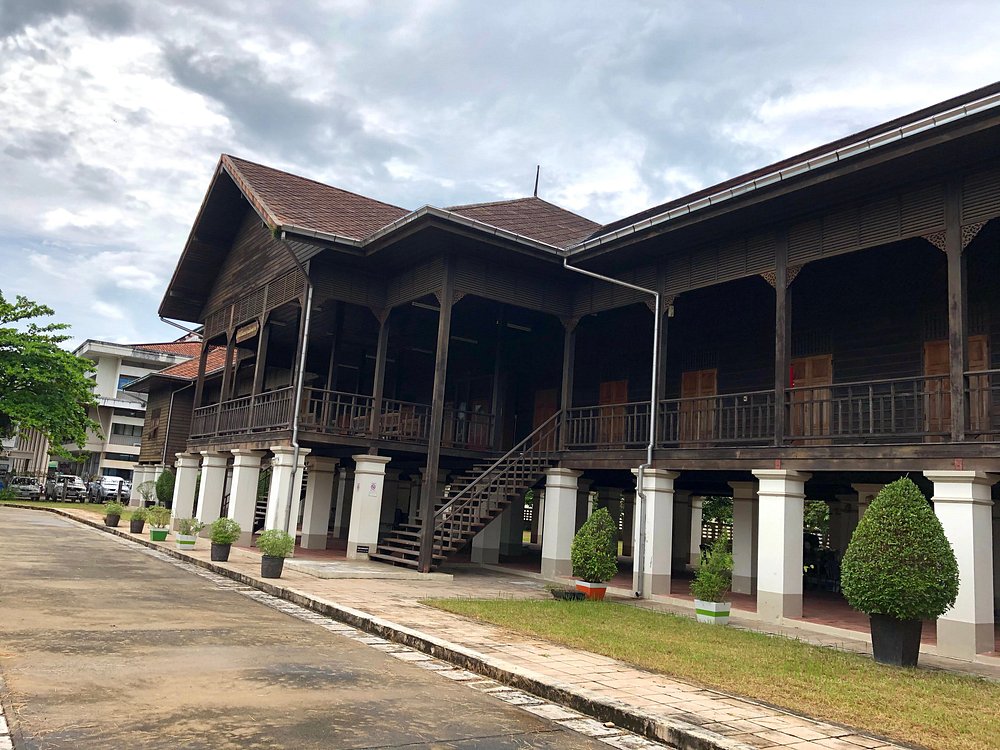
Trat City Museum is a fine example of colonial architecture with elevated wooden columns, featuring a Panya-style roof and braces. Built in 1921 during the reign of King Rama VI as the provincial council building, it later served as a government office before being largely damaged in a fire in 2004. The building was restored by the Fine Arts Department in accordance with its original form and converted into a museum in 2005. Located in the heart of the city on Santisook Road, this single-story structure is one of Trat’s most important architectural and historical landmarks.
The museum offers visitors a comprehensive presentation across six thematic rooms, covering Trat’s natural heritage, culture, ethnic composition, and archaeological past:
– Geology, climate, and natural resources of Trat
– Diverse communities in the region (Thai, Chinese, Khmer, Vietnamese, etc.)
– Chronological history from the Prehistoric Age to the Rattanakosin Period
– Significant events during the reign of King Rama IV
– The 1941 Naval Battle of Koh Chang
– Muang Trat’s market and commercial life
The museum is open Tuesday–Friday from 09:00 to 16:00, and Saturday–Sunday from 09:30 to 16:30 (closed on Mondays). Admission is 30 THB for adults and 10 THB for children. Visitors can explore the city’s rich past step by step through panels available in both Thai and English.
11. Wat Buppharam (Wat Plai Klong)

Wat Buppharam, locally known as Wat Plai Khlong, is a Buddhist temple of the Mahā Nikāya sect located in the Ban Plai Khlong neighborhood, northwest of Trat city center. Built during the Ayutthaya period under Queen Prasat Thong’s reign, the temple’s name, meaning “temple filled with fragrant flowers,” was inspired by its founder finding the land covered with the scent of blossoms. It is regarded as the oldest and most artistically significant structure in Trat province.
The main structures of Wat Buppharam include the ordination hall (ubosot), the monastery building, and the Buddha footprint pavilion, all reflecting early Rattanakosin period architecture. The murals inside the ubosot are adorned with motifs blending Ayutthaya and Chinese art, and all buildings have largely preserved their original features to this day. Recognized with the ASA Architectural Conservation Award in 2001, the temple is a must-visit for both worshippers and those interested in art and history.
12. Ao Tan Khu Beach
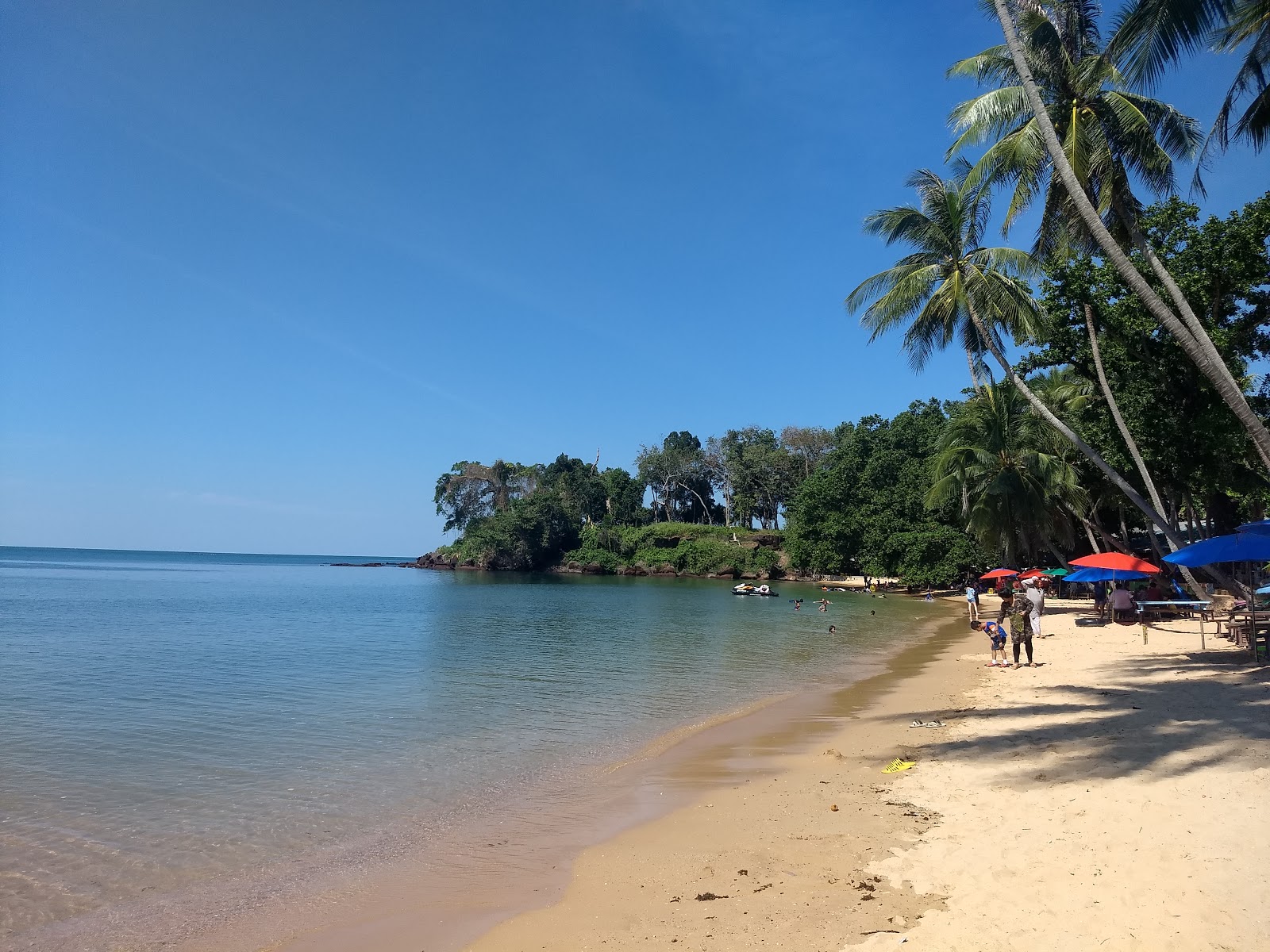
Ao Tan Khu Beach is located on the Laem Ngop coast, in a crescent-shaped bay approximately 500 meters long with fine sandy shores. It is noted for its crystal-clear waters and pristine soft sand; however, swimming is not recommended due to strong currents. A few coconut trees and thatched-roof rest platforms lining the back of the beach create a nature-immersed atmosphere, with the distant silhouette of Koh Chang completing the scenic view.
Access to the beach is via a 4 km dirt road off the Ban Saen Tung–Laem Ngop route. At both ends of the bay, small boutique accommodations offer fan-cooled or air-conditioned rooms; simple seaside restaurants serve seafood and light Thai dishes. While Ao Tan Khu becomes crowded with locals on weekends, it offers a quieter experience for weekday visitors.
13. Suvarn Gleaw Thong Beach

Suvarn Gleaw Thong Beach is a quiet and unspoiled stretch of shoreline located in the Tambon Laem Klat area of Trat. Known for its golden sands and clear blue sea, the beach offers a tranquil environment with the opportunity to relax under the shade of palm trees. The area’s underdeveloped nature creates an atmosphere that allows visitors to feel close to nature and enjoy a sense of privacy, while also offering a glimpse into the colorful daily life of surrounding local communities. This beach promises a peaceful escape away from crowds, ideal for both families and solo travelers.
The beach provides a comfortable visit with clean restrooms, outdoor showers, and picnic tables; sun loungers and umbrellas are available for rent, making it easy to stay shaded. Lifeguard towers staffed by professionals enhance swimming safety, while the calm waters make it ideal for water activities like canoeing, kayaking, and surfing. Beach volleyball courts and nearby nature trails offer a variety of options for active visitors. Wheelchair access and designated disabled parking areas also ensure the beach is accessible to all.
14. Ruby Beach
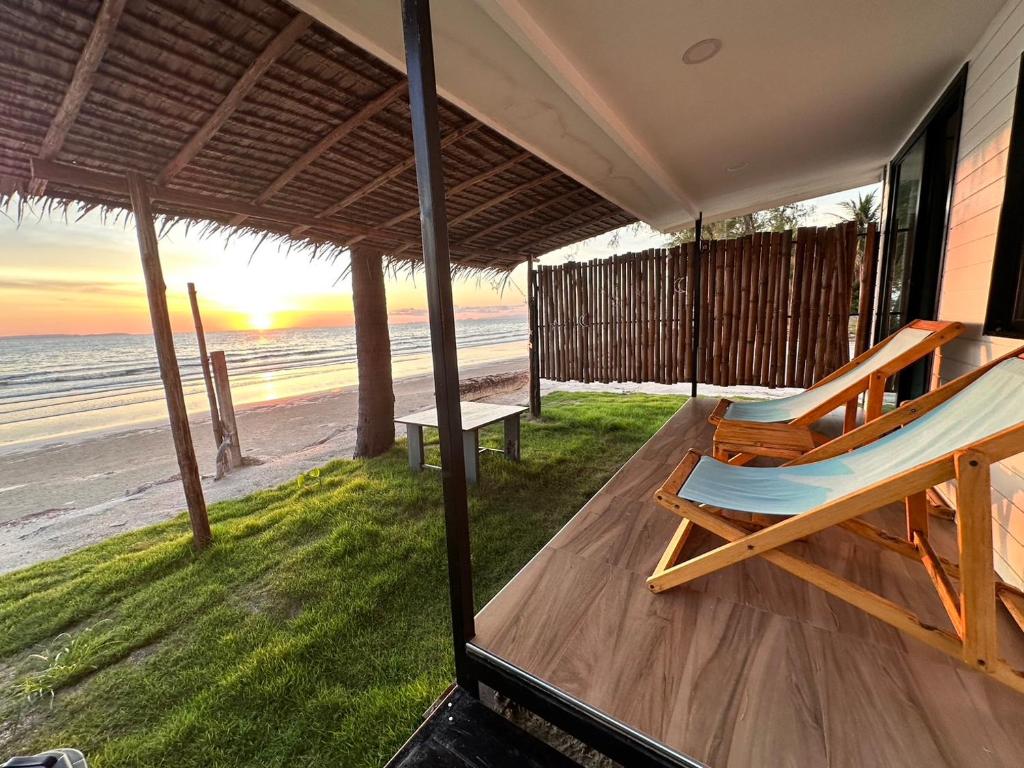
Ruby Beach is a small and pristine bay located on the mainland of Trat Province, near the town of Laem Klat. With its fine, almost untouched sand and crystal-clear waters, it is an ideal spot for those seeking a relaxing escape; it offers a peaceful setting perfect for swimming either before or after joining one of the nearby boat tours.
Ruby Beach, where developed facilities are kept to a minimum, can be reached by road via small turnoffs along the Laem Klat–Trat route or through organized regional tours. Due to limited accommodation options in the area, most visitors opt for day trips. Nearby local restaurants and cafés offer a selection of seafood and traditional Thai cuisine.
15. Laem Sok Pier Ferry Terminal
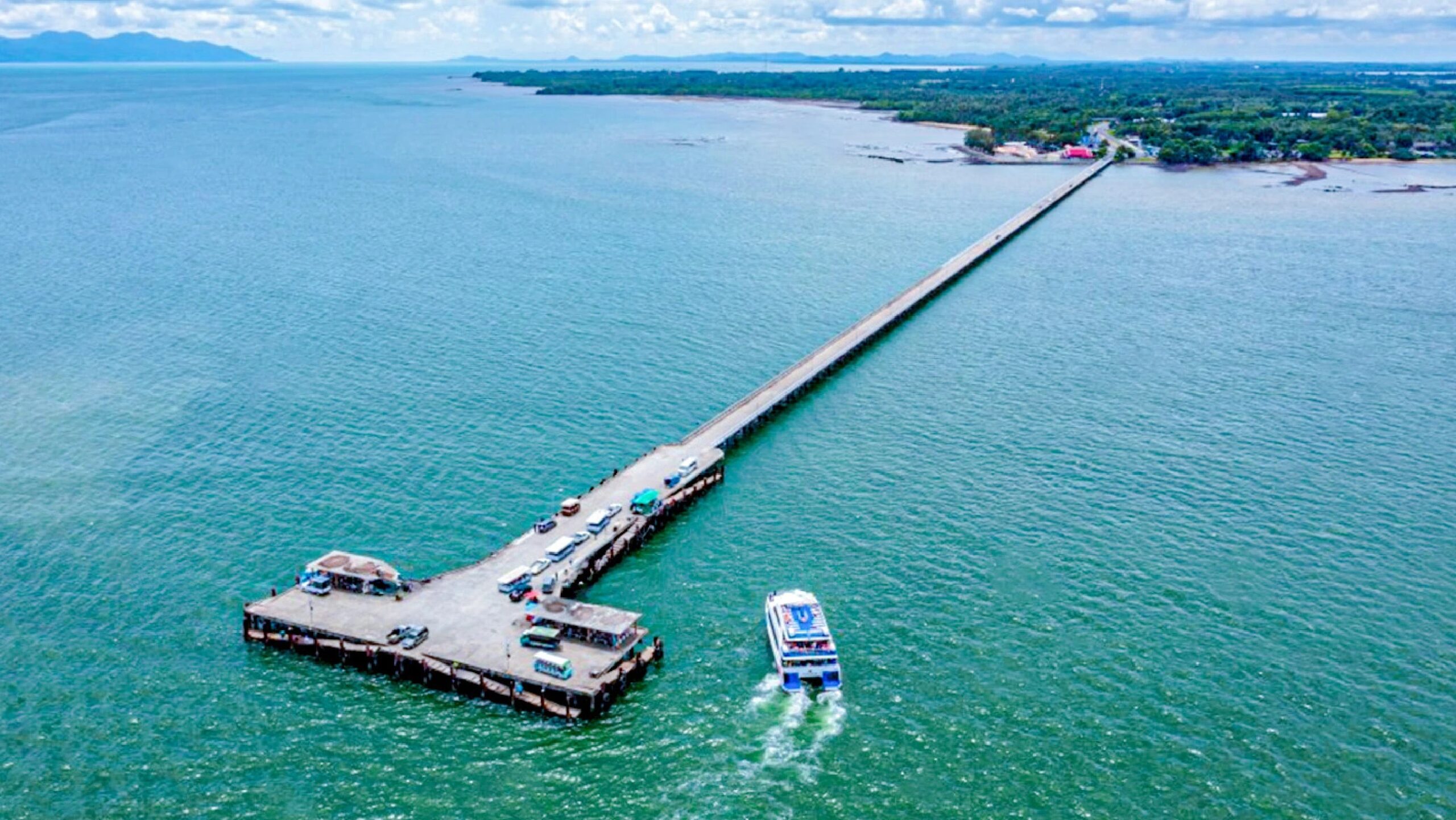
Laem Sok Pier is located in Ao Yai subdistrict of Mueang District, Trat Province. Construction began in 2551 BE (2008) and was completed in 2553 BE (2010). This pier is one of the region’s most important maritime transportation hubs, offering ferry and speedboat services to Koh Kood, Koh Mak, and Koh Chang. With its spacious pier platforms, ticket counters, and waiting areas—alongside air-conditioned boats—it provides passengers with a comfortable travel experience.
Situated about 51 km by road from Trat city center, Laem Sok Pier can be accessed via taxi or shared minivans. Vehicles can be safely parked at designated ferry-operated lots. Companies like Boonsiri High Speed Ferries and Seudamgo operate three daily services to Koh Kood and six to seven weekly services to Koh Mak, while operators such as Ko Kut Express and Koh Kood Princess also serve the area.
16. Ban Nam Chiao Village
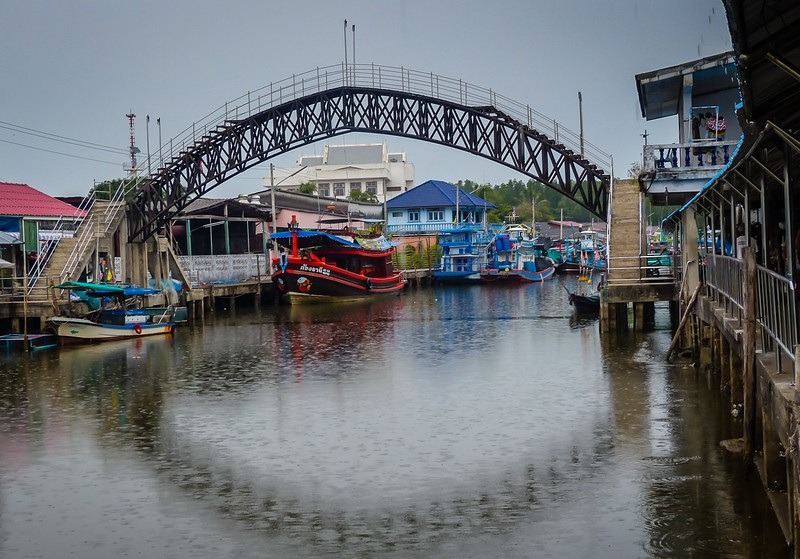
Ban Nam Chiao is a subdistrict (tambon) of Laem Ngop District, located about 9 km from Trat city. The area is surrounded by low hills, flatlands, and vast mangrove forests. It takes its name from a large canal known for its rapid flow during the rainy season (“nam chiao” = “strong current”). The main village of Ban Nam Chiao was established over 200 years ago as a fishing and farming community. Later, Chinese traders and Cham Muslim migrants from Cambodia during the reign of King Rama III joined the population. Today, a Buddhist temple (wat), a church, and a mosque stand side by side in the same village, offering a tangible example of three religious traditions and cultural harmony coexisting peacefully.
Ban Nam Chiao is one of the leading examples of community-based ecotourism. Visitors can join boat or canoe tours through the mangrove labyrinth guided by locals, where they have the opportunity to observe and photograph over 30 species of birds. The area is also known for its curved bridge called the “Daredevil Bridge” (Saphan Wat Chai), which rises to the height of a three-story building over the canal, offering a thrilling experience for adrenaline seekers. Other available activities include planting mangrove trees, enjoying a seafood lunch with local ingredients, and participating in a traditional Thai herbal foot bath.
17. Ko Rang
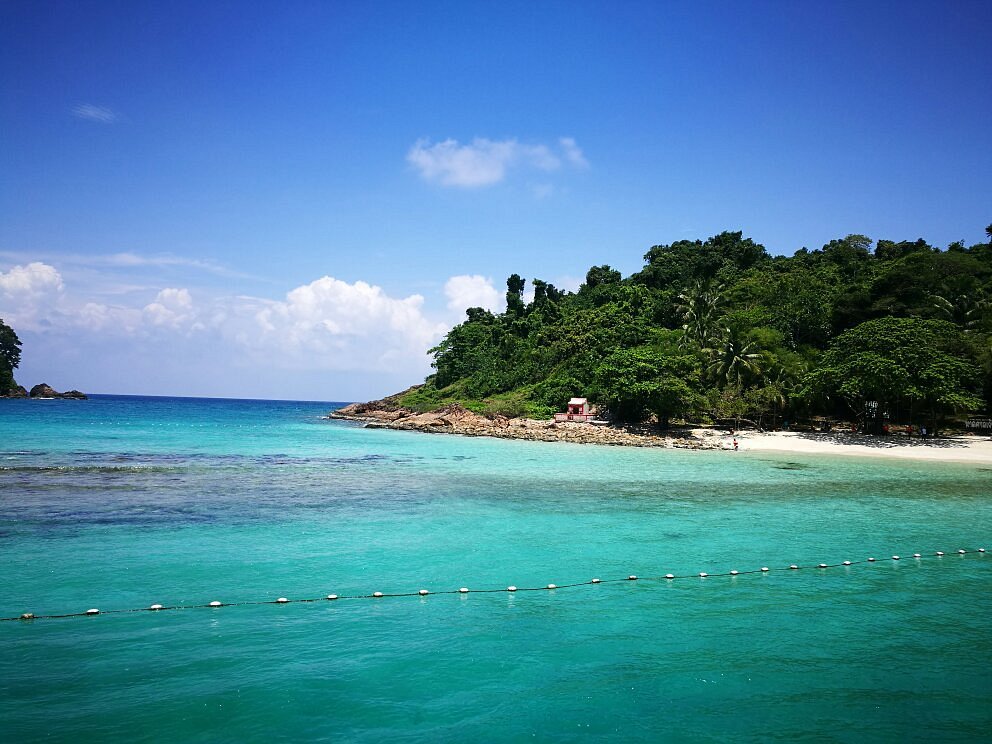
Ko Rang is a small island located southwest of the Ko Chang archipelago, at the southeastern edge of the Gulf of Thailand. The island is characterized by its granite rock formation, which rises sharply from waters that are about 60 meters deep in most places, and it offers only a limited number of beaches. In the southeast corner, mooring buoys installed by the Thai Coast Guard allow dive boats to anchor, while a small Buddhist shrine featuring phallic fertility symbols is located on the beach.
There are no hotels or bungalow accommodations on the island; instead, eco-tourism-friendly camping is permitted. Ko Rang is a popular destination for divers and snorkelers arriving on day trips. The surrounding turquoise waters are home to rich rocky reefs and a wide variety of tropical fish species. The island is also known among locals for its caves, where edible swiftlet nests are harvested annually.
18. Ko Yak Lek
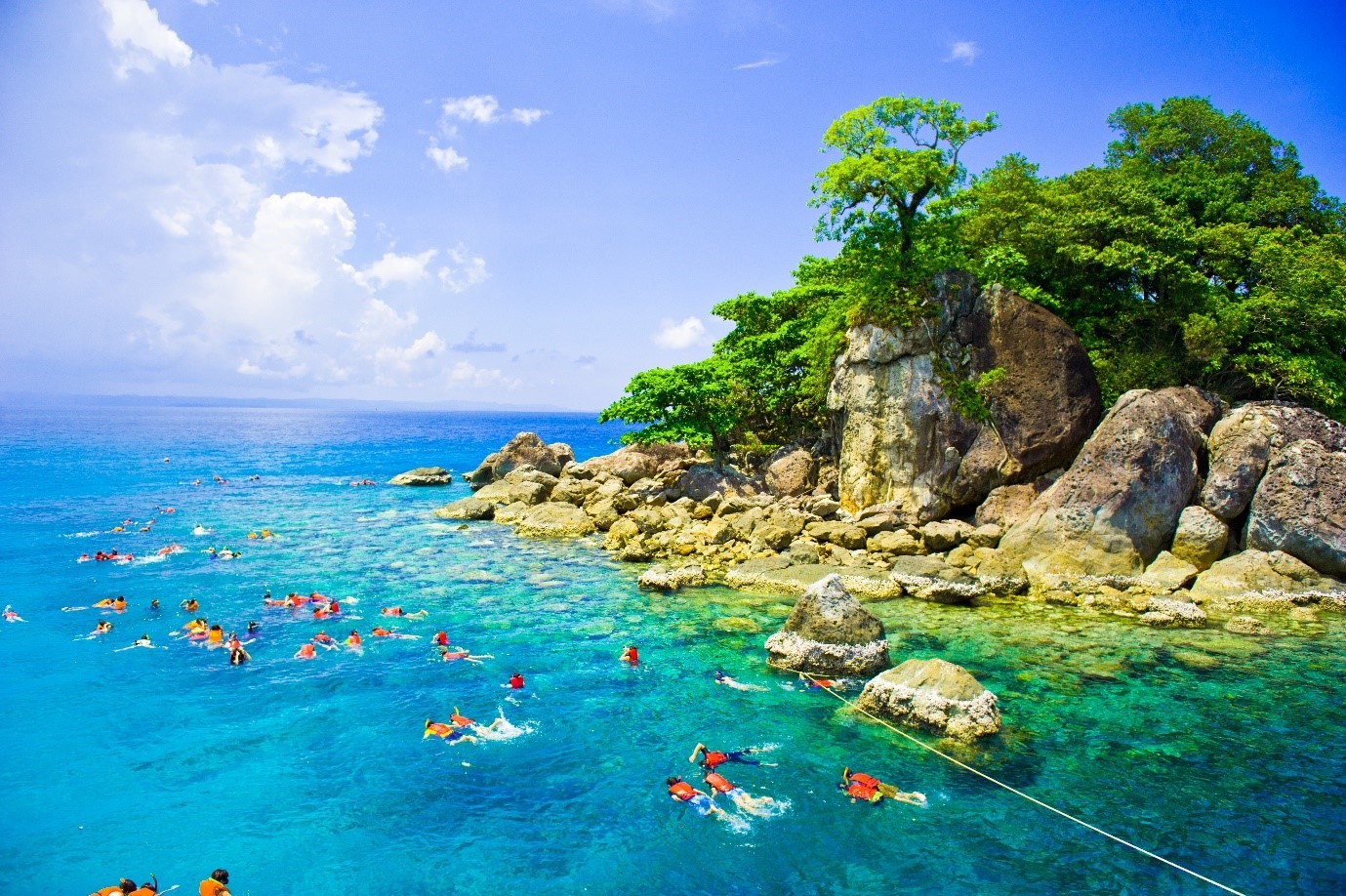
Koh Yak Lek is a small rocky islet located to the east of Ko Rang Marine National Park and is sometimes also referred to as Koh Laun. The name “Yak Lek,” meaning “small wild,” is used to distinguish it from its larger neighbor, Yak Yai (“big wild”). The island consists entirely of granite rock with minimal vegetation; its main attraction lies in the clear waters and rich marine life surrounding it. As part of the popular four-island day tours, boats departing from Koh Chang and Koh Kood often include Yak Lek in their routes, offering visitors the chance to observe colorful coral reefs and schools of tropical fish along the way.
Coordinates mark the island as freely accessible without an entry fee, and during peak season, underwater visibility can reach up to 15–20 meters, making it an ideal destination for snorkeling enthusiasts. Although it is considered quieter than Yak Yai, it can still become crowded with surface boat traffic due to its inclusion in popular tours; for the best experience, visiting in the early morning hours, when fewer boats are present, is recommended.
19. Koh Lao Ya Nai
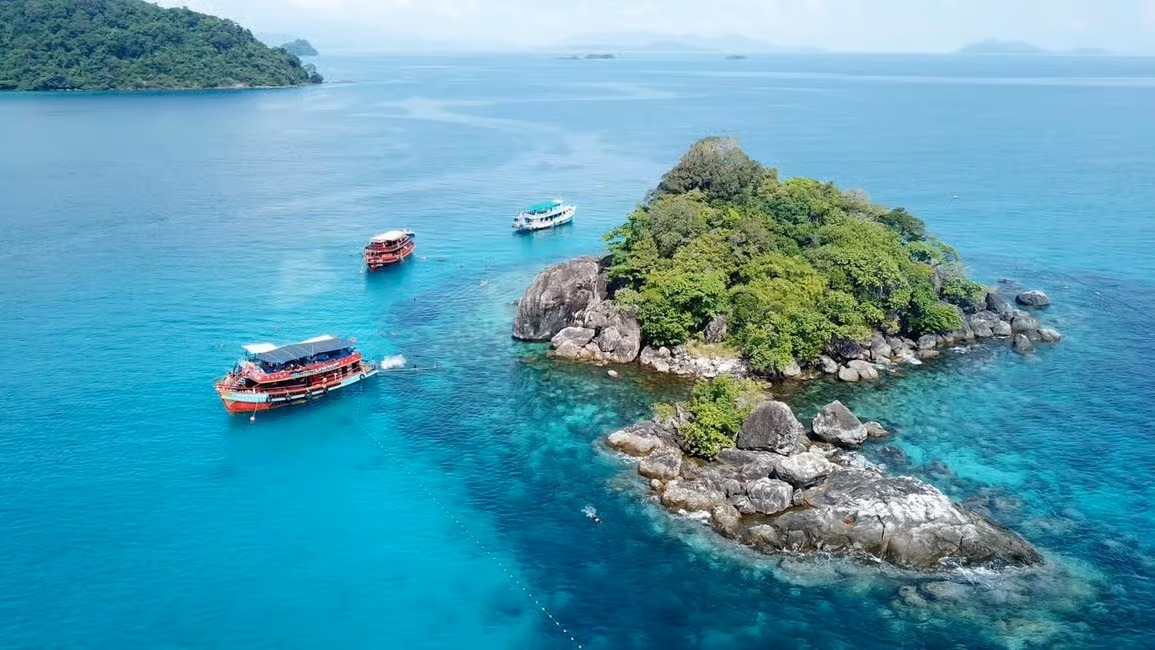
Ko Lao Ya Nai is the largest of a group of three small islands—Ko Lao Ya Nai, Ko Lao Ya Klang, and Ko Lao Ya Nok—located south of Ko Chang. The island, about one kilometer in length, is known for its fine white sandy beaches, crystal-clear waters, and colorful coral reefs. Its interior features untouched tropical forests.
The island can be reached by long-tail boats departing from Laem Ngop or Bang Bao piers on the Trat coast, with the sea journey taking approximately one hour. Due to limited accommodation options, most visits are in the form of day trips. Visitors can relax on the beaches, snorkel in the shallow waters to explore coral reefs, and take short nature walks along forest trails within the island.
20. Ko Kradat
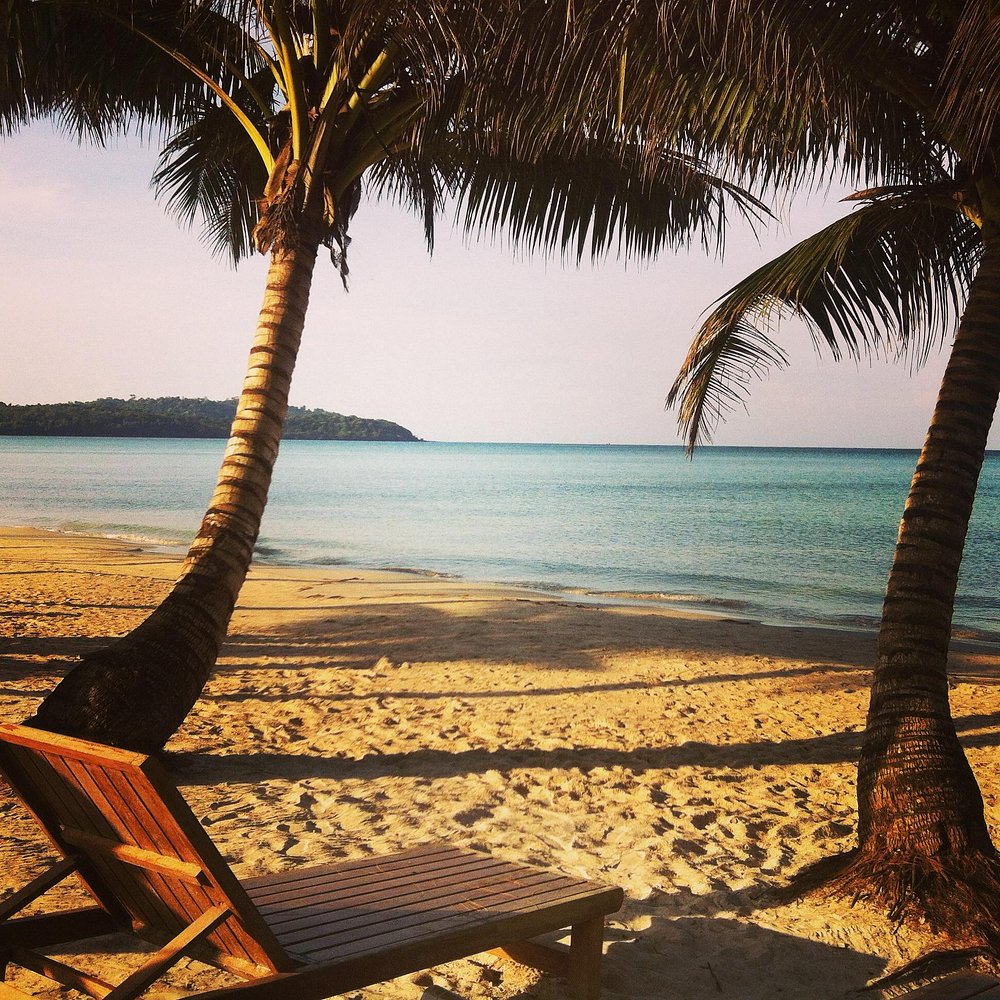
Koh Kradat is a small, privately owned island located off the coast of Trat, northeast of Koh Mak. As it lies outside the boundaries of Mu Ko Chang Marine National Park due to its private status, the island is notable for its flat topography and palm tree-lined beaches. However, it is best known for the large herd of deer that roam freely—some of which are quite tame. It also holds historical significance as the first island in Thailand to receive an individual land title deed (Chanote), officially granted by King Rama V to assert royal authority.
The island is typically reached via long-tail boats departing from Laem Son Pier on Koh Mak, with the journey taking around 15–20 minutes. The entrance fee is 100 THB per person, while boat fares vary between 150–350 THB depending on the operator. Upon arrival, visitors can feed the deer, relax on the tranquil beaches, or snorkel near the coral reefs along the island’s clear waters. Due to limited accommodation options on the island, most visits are organized as day trips.
